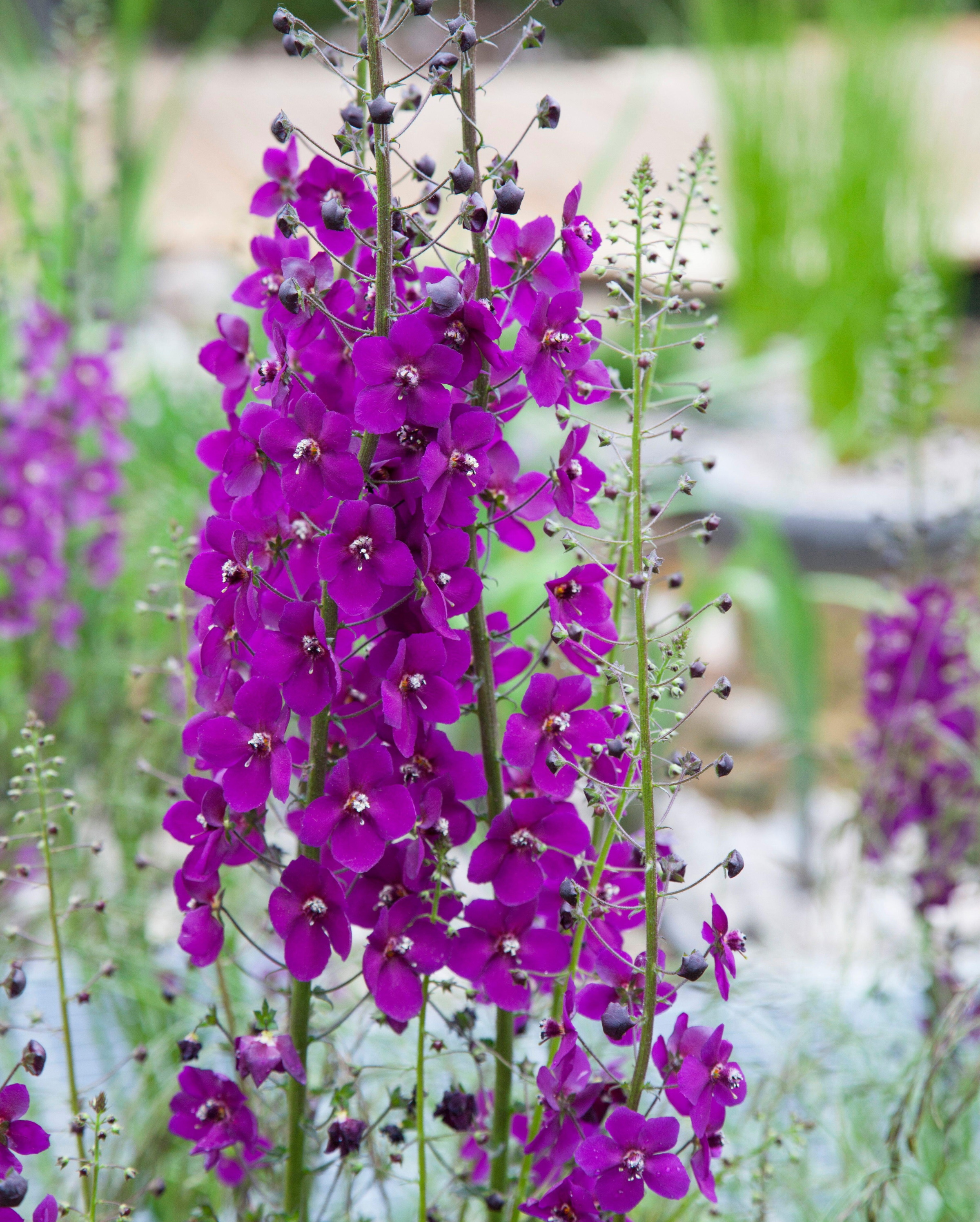Best plants from the RHS Chelsea Flower Show 2024 – these are the plants that stole the show
Thousands of picture-perfect plants were on display at the Chelsea Flower Show this year, but these plants were the talk of the town


It is that time of year again when designers, growers and gardeners come together for the RHS Chelsea Flower Show in London. As always, the Royal Horticultural Society has treated visitors to a spectacular show full of novel flower bed ideas.
All of the gardens showcase thought-provoking ideas and concepts. The Forest Bathing Garden in support of Muscular Dystrophy UK, won the coveted 'Best Show Garden' award. This garden was designed by Ula Maria, who sought to educate visitors about the Japanese practice of forest bathing, whereby spending time in nature is considered a form of relaxation and meditation.
The undoubted star of the Forest Bathing Garden, and every garden for that matter, was the planting. Each year, striking trees, shrubs, perennials and annuals wow and inspire gardeners who seek to emulate garden ideas and designs in their own spaces. Here, we share the top plants that stole the show this year. Why not try and grow some of these in your yard this year, and achieve a Chelsea-approved look?

The National Garden Scheme Garden. Designed by Tom Stuart-Smith. Sponsored by Project Giving Back. In support of the National Garden Scheme. RHS Chelsea Flower Show 2024
Best plants from the RHS Chelsea Flower Show 2024
If you want to add some of that RHS Chelsea wow factor to your yard, consider growing some of the following plants that drew the attention of visitors this year. These flowering perennials are sure to add color, texture and impact to any space, whether grown in pots or garden borders.
Verbascum

Verbascum phoeniceum 'Violetta' in bloom with purple flowers
If you are looking for a perennial that will add floral interest and height, verbascum is the plant to grow. Tall and elegant verbascum flower spikes were in fine form across the Chelsea showground this year.
Verbascum plants can be found in various colors, ranging from pale peach to deep maroon. One variety that drew my attention was Verbascum phoeniceum 'Violetta', seen in the image above. Planted in drifts on the RHS Chelsea Repurposed garden, designed by Darryl Moore with Toby Magee, the effect was mesmerizing. Attractive purple blooms open on tall stems that gently move in the breeze, combining brilliantly with ornamental grasses.
Verbascum seeds are available to buy online from Burpee.
Design expertise in your inbox – from inspiring decorating ideas and beautiful celebrity homes to practical gardening advice and shopping round-ups.
Saruma henryi

Saruma henryi, with heart-shaped leaves and yellow flowers
Saruma henryi, commonly referred to as wild ginger, is a full-shade perennial that is native to forests and wooded areas in China. Seen growing in several gardens at the show, including on The National Garden Scheme Garden, designed by Tom Stuart-Smith, this low-growing plant is an ideal option for dry-shade conditions.
Confusingly, despite its name, this plant does not belong to the ginger family. As seen in the images here, it produces attractive heart-shaped leaves, but the real pull is the delicate three-petalled blooms that open in a lemon-yellow hue, flowering for much of the spring and summer. This perennial can also be grown in pots.
Primula

Primula vialii with red and purple blooms
Primula vialii, commonly known as the orchid primrose, is a dramatic primula that drew much attention at this year's show. The cone-shaped flower appears both red and lilac, typically blooming from early summer.
This plant thrives in a partially shaded position, preferring consistently moist soil. Primula vialii could be seen growing on the WaterAid Garden, designed by Tom Massey and Je Ahn, with the colorful blooms punctuating the lush, verdant planting.
Primula vialii seeds are available to buy online from Amazon.
Foxgloves

The Octavia Hill Garden by Blue Diamond with the National Trust. Designed by Ann-Marie Powell. Sponsored by Blue Diamond Garden Centres and The National Trust. RHS Chelsea Flower Show 2024
Foxgloves are a Chelsea classic, typically found growing in several show gardens, blooming in a range of colors, from white to pink to peach. These spring biennials are ideal for adding vertical interest to garden borders.
This year, bright pink foxgloves were planted to brilliant effect on The Octavia Hill Garden, designed by Ann-Marie Powell. When considering how to grow foxgloves, these self-seeders are biennial, flowering in their second year. Leave spent blooms to go to seed, which will help increase your foxglove collection for subsequent years.
Foxglove plants are available to buy online from Nature Hills.
FAQs
What long-flowering perennial is best to grow in full-sun?
Many verbascum varieties grow best in full-sun, but for a long-flowering showstopping option, I would recommend growing rudbeckia. These long-flowering plants can be grown in full sun and tolerate dry conditions, blooming from late spring through until the fall. For more information, see our guide on how to grow rudbeckia, with tips and advice on how to successfully grow this perennial from seed.
Consider adding some of these plants to your borders and pots, enhancing your perennial displays with show-stopping blooms. For more planting inspiration, see our guide on some of the best perennials, to add even more floral interest to your yard this year.
For more inspiration from the RHS Chelsea Flower Show, see our guide to The Bridgerton Garden, a tranquil, regency-inspired space.

Thomas is a Content Editor within the Gardens Team at Homes and Gardens. He has worked as a professional gardener for both public spaces and private estates, specializing in productive gardening, growing food and flowers. Trained in Horticulture at the Garden Museum, he has written on gardening and garden history for various publications, including The English Garden, Gardens Illustrated, Hortus, The London Gardener and Bloom. He has co-authored a Lonely Planet travel book, The Tree Atlas, due out in 2024.